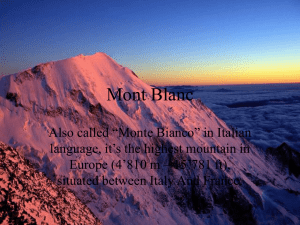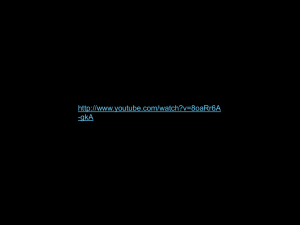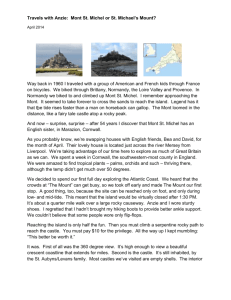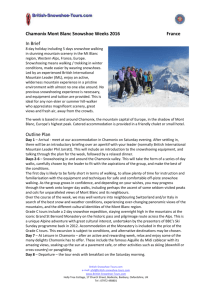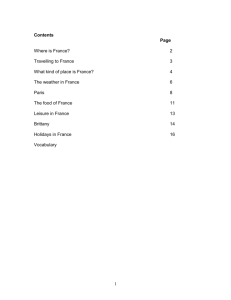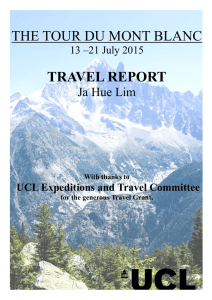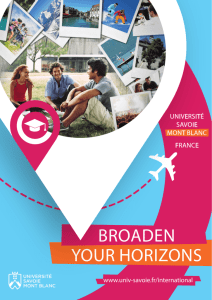Climbing Mont Blanc is best left to experienced
advertisement
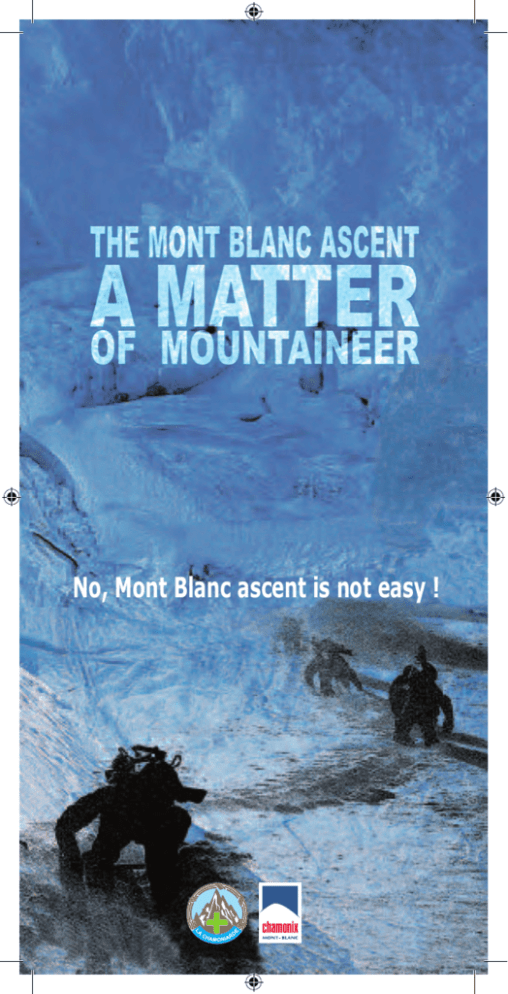
No, Mont Blanc ascent is not easy ! 4810,44 m* TOP OF EUROPE, the Mont Blanc catalysis the desires of unattainable and the threshold of attendance is reached today, with all the associated excess (risks, pollution, misinformation about the difficulty of the ascent…). It is imperative to restore the true alpine value of the Mont Blanc ascent. Candidates must be aware of the physical and moral test that it represents, of the risks involved and to the respect of the place (magical and magnificent) that implies. THE MONT BLANC, CONSUMER OBJECT? Considered like a « doable feat » to have on his personal resume, the Mont Blanc is quiet often presented like an idyllic adventure. Wrongly. Even if it seems so close from the valley. THE MONT BLANC, AN ALPINIST REWARD! One does not start his alpine career with the Mont Blanc! Learning mountaineering skills and gaining experience begins elsewhere with progressive routes which may be as remarkable. Then the Mont Blanc becomes a consecration and not a feat marked with disrespect. SOME REVEALING FIGURES • Overcrowding 350 to 400 departures every summer day through the different routes. Cabins overwhelmed and up to 70 tents reported on Col du Midi even if camping is not allowed. NON ! NO ! NEIN ! NEM ! NEE ! NE ! NIE ! Huge amount of waste abandoned on a Classified Site. • Risks 80 to 100 rescue interventions every year (sometimes several per day!) included 80 % because of exhaustion due to poor physical preparation and/or lack of acclimatization. Natural hazards (avalanches, falling seracs, rockfalls, storms, poor visibility, etc.) are very important especially on the classics itineraries. There is each year several fatalities (13 in 2012). • Estimate the difficulty and the conditions Between 40 to 100 % of failure every day. Hired a high mountain guide certified IFMGA** increases very significantly the chances of success. The will from municipalities in charge of the site, associated with mountain professional workers, is to give responsibility to the candidates of the ascent by a rigorous information and effective prevention. This document materializes a consensus approach to inform and prevent in order to protect the freedom of access to mountains and to avoid further introduction of more restrictive regulation. * Measured in September 2011. ** Guides recognized by the International Federation of Mountain Guides Associations (IFGMA). A NEAR “5 000”: RISKS RELATED TO ALTITUDE By perfect weather and conditions, climb up the Mont Blanc can be ideal. But it can became very harsh and even dangerous depending on conditions that may be encountered (snow, wind, fog, cold) and fatigue. The sequence can quickly be infernal… ALTITUDE MOUNTAIN SICKNESS (AMS) • With elevation, the drop in atmospheric pressure implies a rarefaction of oxygen hence the need for the organism to adapt prior. ⌂ Oxygen pressure - 160 mm of mercury at sea level, 85 mm at the top of Mont Blanc : air is half rich in oxygen. • 79 % of people asked, once returned from a Mont Blanc ascent, said they suffered from AMS: headaches, nausea, vomiting, oedema, insomnia, fatigue, dizziness, etc. These signs can persist and be invalidating or fatal (brain oedema in particular). AMS spares nobody, even the best alpinist if not acclimatized. • Only one prevention: acclimatization! FATIGUE • With elevation, physical deterioration is very fast. Besides the lack of acclimatization, both cold and length of the routes are reasons of fatigue. Physical deterioration alters lucidity, interfers with decision making process and slows down the ability to control difficulties. • The ascent requires to be well trained! QUICK CHANGES OF WEATHER AND RISKS • In altitude, weather is uncommonly unstable and evolves quickly, resulting in weather (snow, cold, fog, wind) and conditions changes (ice, frost, snow). • Clouds development is extremely fast and may cause severe orientation difficulties. • Thunderstorms are frequent, more surprising and more dangerous than on the valley floor. Fog and poor visibility, wind bursts (up to 150km/h at the top) put at risk the pace and lightning is a major danger. INTENSIFICATION OF COLD • In the Mont Blanc massif, the temperature decreases from 0.33 to 0.91°C every 100 m in elevation. • The feeling of cold is highly intensified by the wind: it is the « Windchill » effect. At the summit of Mont Blanc, a temperature of -15°C without wind corresponds to -30°C with a 60 km/h wind. It is imperative to renounce. • In case the pace slows down (fatigue, bad weather, accident…) hypothermia quickly occurs. • Be aware of frostbite at extremities (fingers, toes, face, cornea) appearing quickly with cold and windy weather. Deep frostbite with tissue destruction are encountered in hard conditions, hence the interest not to induce some in particular by negligence. • If cold is associated to high mountains, without wind and when exposed to sun, it may be very warm. Then, be careful of sunburns (even by cold weather!), sunstrokes and snow blindness. ► At 4810 m elevation, a trained person can only produce 70 % of the effort compare to sea level. This value decreases even more with cold and fatigue. CLASSIC ROUTES… BUT RISKY ROUTES The normal route by le Goûter It is possible, after using the Tramway du Mont Blanc from Saint Gervais (or via the Téléphérique de Bellevue from Les Houches) to overnight in Goûter refuge or from Tête Rousse refuge. This second option allows to cross the infamous Goûter couloir at a good schedule and to spend a better night. This is the route having the less technical difficulties, nevertheless it must be approached with distrust* due to the numerous rockfalls descending one of the gully one has to cross to reach the Goûter refuge. Early in the season, when snow is melting, rocks and boulders are dislocated. Later, boulder and rockfalls are produced by the thaw action on the mountain side that climate change speed up. If wearing a helmet is mandatory, it may be useless when tons of rock comes down from hundreds meters higher! From the Goûter refuge, the itinerary is only on ice/snow with the associated risks (ice slope, crevasses). The Trois Monts route Slightly more technical than the previous itinerary, this beautiful route start from the Téléphérique de l’Aiguille du Midi and implies to overnight at the Cosmique refuge. The « Trois Monts » correspond to Mont Blanc du Tacul shoulder, Mont Maudit pass, and Mont Blanc. The ascent of the first two is exposed to avalanches and seracs falls. Glaciers are in continuous evolution: they progress by sliding and distortion of the ice. Also, and opposed to what is often said, seracs falls (huge ice mass created by the cracking of the glacier) can happen anytime, whatever the temperature. Those events can be the origin of snow and ice avalanches. It is not useless to wear the proper equipment (avalanche beacon, probe, shovel) and to know how to use it. The steepness (Mont Maudit: lopes up to 45°) and the eventual issues to cross bergschrund should be also taken into account. The Grands Mulets route It is the most classic route in spring for a ski ascent. Starting from the intermediate station of the Téléphérique de l’Aiguille du Midi or from Plan de l’Aiguille refuge, this route goes through the Grands Mulets refuge Risks are the same than the one encounter on the Trois Monts route (seracs falls, avalanches) with a higher risk to fall down in a crevasse. ► « Zero » risk doesn’t exist in high mountains environment. It is necessary to take all the arrangement to minimize the exposure. Beyond altitude risks and more generally high mountains environment risks, the greater risks are maybe inherent to the contenders themselves: do not know how to renounce, poor judgment due to the group effect, thinking that the crowd around means safety... * 74 fatalities from 1990 to 2011 (PGHM / Petzl Foundation study) BE READY • Ascent the Mont Blanc is not hiking but ALPINISM! The technical skills have to be mastered by the whole team members. • A good and conscientious physical training (hiking, biking, running) at least 3 months before the ascent is ES-SEN-TIAL! • Be well ACCLIMATIZE, it is carried out by some preparatory itineraries and/or progressive stay in mountains refuges (3 nights above 2500/3000 m are often needed). • Choose the route depending on the difficulty, your own abilities and conditions of the mountains. • Be properly equipped for icy/snowy alpine ground and know how to use it. • Own a garbage bag. Mont Blanc is a very sensitive Classified Site. • Wear a helmet, an avalanche beacon, a probe and a shovel is strongly advised. Besides avalanche, shovel can help to dig a hole in case of emergency. • As weather is changing fast and because all the tracks are not good to follow, mastering orienteering is mandatory. • Never go alone. ADAPT AND KNOW TO RENOUNCE • Take the time to learn and to progress: delay the ascent for an adequate acclimatization, plan only once controls of the ground, technics and training are learned. • Adapt the day of ascent regarding refuges booking. • Adapt the ascent regarding weather and snow conditions (postpone, cancel). • If weather turns, know to renounce. • Succeed with a dosed effort: a marathonian runner may not get to the top. • Know how to hydrate and feed correctly and regularly. • Stop the ascent and turn back immediately with the first serious signs of AMS. MANAGE AN ACCIDENT AT 4 810 METERS, A SIMPLE WEAKNESS CAN BE LETAL. NO ONE CAN SIN BY IGNORANCE OR BY RECKLESSNESS. AN ÉQUIPMENT NOT ADAPTED/ MASTERED, TECHNICAL ADVICES OR WEATHER FORECAST IGNORED, IGNORANCE OF THE AREA CAN HAVE DRAMATIC CONSEQUENCES. • Avoid an over-accident (avalanche, rockfalls or seracs, crevasse). • Protect the victim from cold and maintain the axis head-neck-body. • ALERT: by phone (112) or radio (150 Mhz). Refuges are equipped with emergency beacon. Rescue intervention has to be considered when it is not possible to manage the situation oneself. ALERT must include a specific message: where, altitude, characteristic point, clothes description, numbers of victims, nature of injuries, name and cell phone. • RESCUE: first aid action. These actions must be known and include emergency scene management, trauma management, airway management, rescue breathing, chest compressions, etc. • When helicopter approaches (if conditions allows): prevent any equipment to fly away, become identified by raising the two arms forming the letter Y (« Yes »). When helicopter lands, crouch low and stop moving. ► Organize its climb, it is be able to adapt to the conditions dictated by an ascent at high altitude, an extreme sport. Renounce is to give the choice to stay alive. ENQUIRE AND BOOKING • Enquire about the route, current risks and conditions. Office de Haute Montagne (OHM) - Pôle Montagne Risk - Provide general and practical information: guidebooks, maps, guides… - Information centre for prevention and mountain related risks. - Specific information and activity (route notebook informed by alpinists) Maison de la Montagne, place de l’église, Chamonix Tel. +33 (0)4 50 53 22 08 / www.chamoniarde.com PGHM de Chamonix Tél. + 33 (0)4 50 53 16 89 / www.pghm-chamonix.com • Take the latest weather forecast (and Snow and Avalanche Report available in winter). - Web: www.meteo.fr or www.chamonix.com - Voice mail +33 (0)8 99 71 02 74 - OHM and Offices de Tourisme • Enquire on medical risks associated with high mountain Health info : www.ffme.fr/fiches-ffme-medicales/page/les-fiches-medicales.html • Enquire on medical risks associated with high mountain. Compagnie des Guides de Chamonix : Tél. +33 (0)4 50 53 00 88 www.chamonix-guides.com Compagnie des Guides de Saint Gervais : Tél. +33 (0)4 50 47 76 55 www.guides-mont-blanc.com Syndicat National des Guides de Montagne : www.guides-montagne.org • Book the refuge and confirm 3 days before is mandatory. In case of cancellation, inform the hut keeper early. Apart from vital necessity, access to the hut without booking will be denied. - Refuge du Goûter : +33 (0)4 50 54 40 93 - Refuge de Tête Rousse : +33 (0)4 50 58 24 97 - Refuge des Cosmiques : +33 (0)4 50 54 40 16 - Refuge des Grands Mulets : +33 (0)4 50 53 57 10 - Abri Vallot: only in case of emergency • Enquire about lift system (schedule, price). Compagnie du Mont Blanc : Tél. +33 (0)4 50 53 22 75 www.compagniedumontblanc.fr ◄ BE CAREFUL: CAMPING IS FORBIDDEN ► (Classified site, R.111-42 Code de l’Urbanisme) From summer 2013, Haute Savoie official authorities will enforce this prohibition. Only bivy, from sunset to sunrise, is allowed.
